Abstract
1. Intracerebroventricular (I.C.V.) injections of taurine into rabbits resting at an ambient temperature (Ta) of 10 degrees or 23 degrees C caused hypothermia but at 30 degrees C ambient temperature, rectal temperature was unchanged. 2. An I.C.V. bolus of 0=5 mg taurine immediately followed by a slow infusion of taurine (0-01--0-2 mg/min) into rabbits at 23 degrees C ambient temperature caused sedation and peripheral vasodilation and blocked the febrile response to Salmonella typhosa endotoxin (1 microng/kg i.v.). Sustained fevers, characteristic of fevers caused by central administration of pyrogens, developed after taurine infusions were stopped. Control infusions of taurine at the same rates in the same rabbits when they were afebrile had little effect on rectal temperature. 3. An I.C.V. injection of 0-5 mg taurine reduced the hyperthermia caused by prostaglandin E1 (PGE1; 2 microng) given I.C.V. A dose of 5-0 mg not only blocked PGE1 hyperthermia but also caused marked hypothermia. 4. Bilateral injections of taurine into the preoptic/anterior hypothalamic region, at sites where injections of Salmonella typhosa endotoxin caused long-lasting fevers, had no effect on rectal temperature. Similar injections into the reticular substance of the medulla oblongata, in the region believed to be concerned with a secondary temperature control function, were also without effect on body temperature. 5. Taurine (0-5 and 5-0 mg, I.C.V.) had no consistent effect on hyperthermia induced by amphetamine (2 mg/kg, I.V.) 6. We conclude that the hypothermic effect of taurine is not due to an action on the central neurone pool or pools concerned with the integrative control of thermoregulatory effectors. This amino acid appears to inhibit neuronal activity in efferent pathways which control peripheral vasomotor tone and heat production and to depress the level of arousal. Taurine delays the onset and extends the duration of endotoxin-induced fever, perhaps by two separate action: by inhibiting activity in central thermoregulatory pathways and by promoting accumulation of endogenous pyrogen in the brain.
Full text
PDF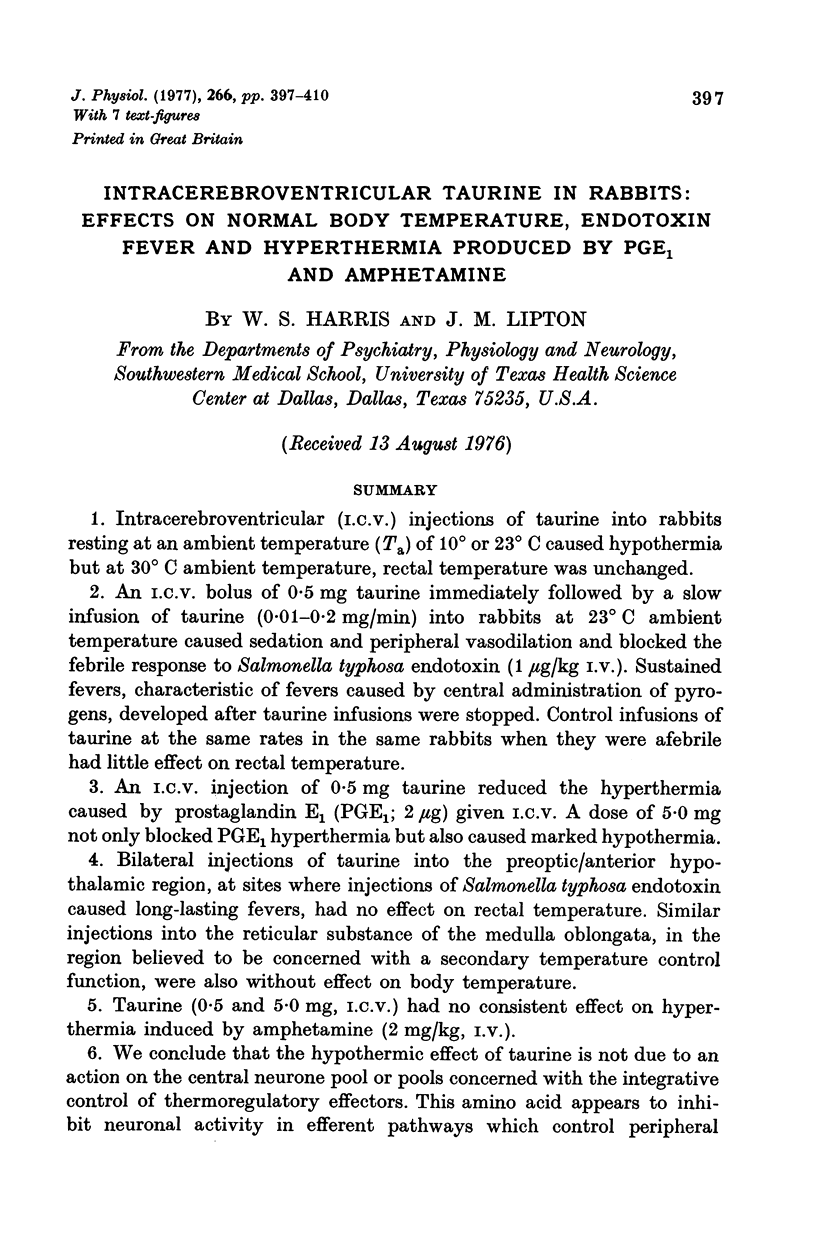
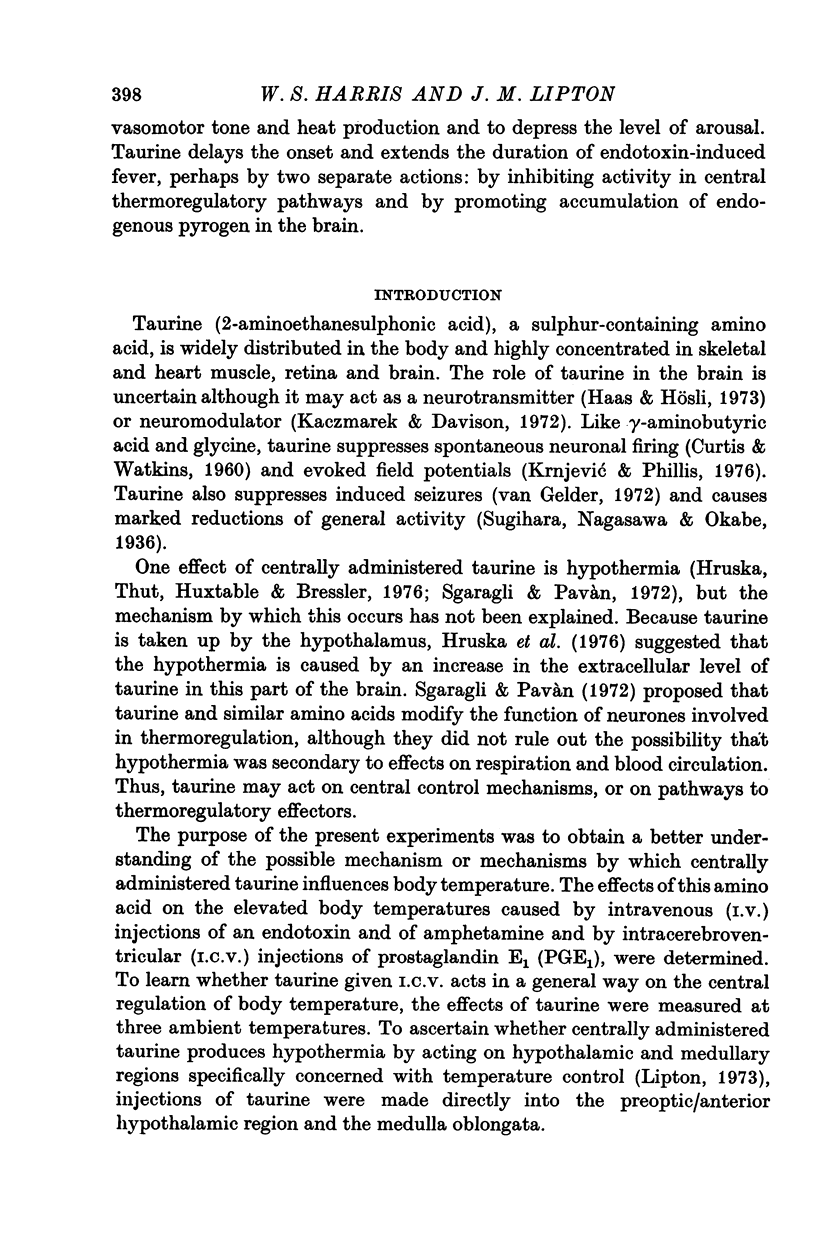
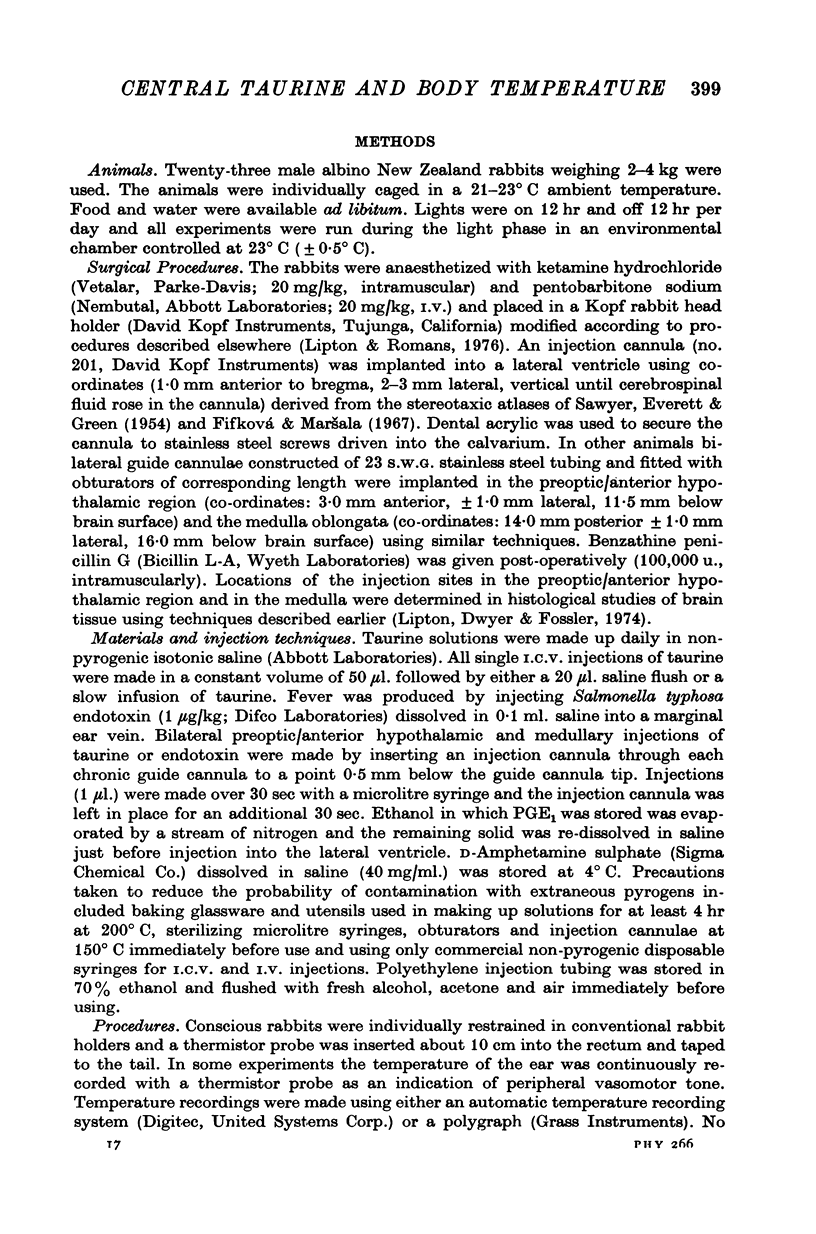
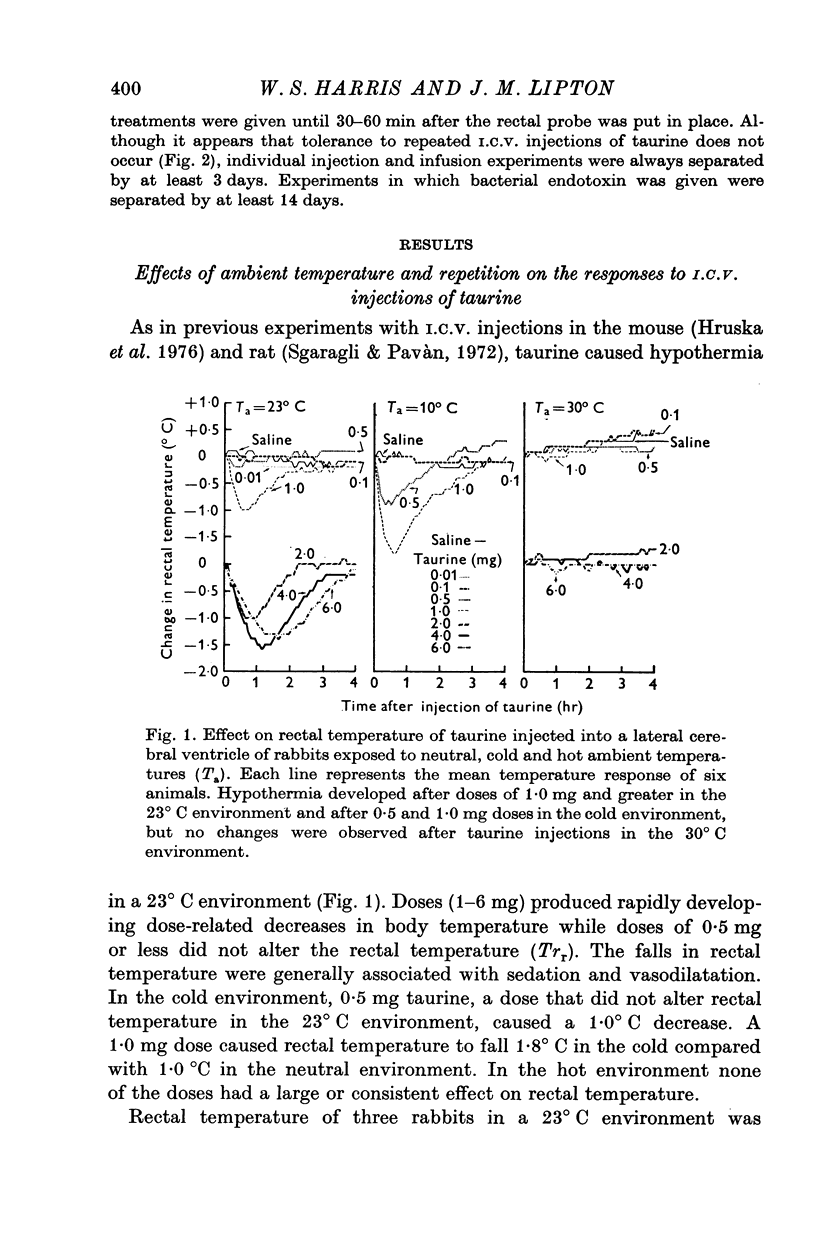
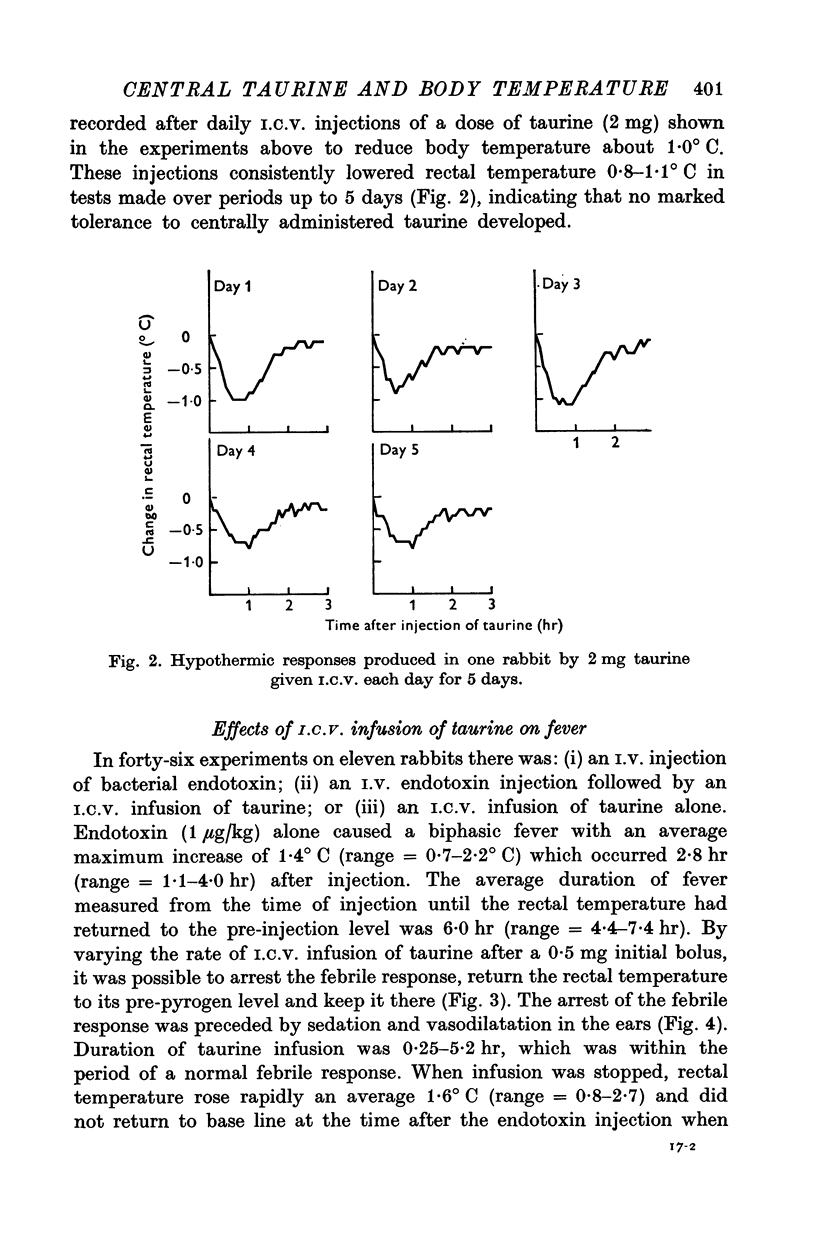
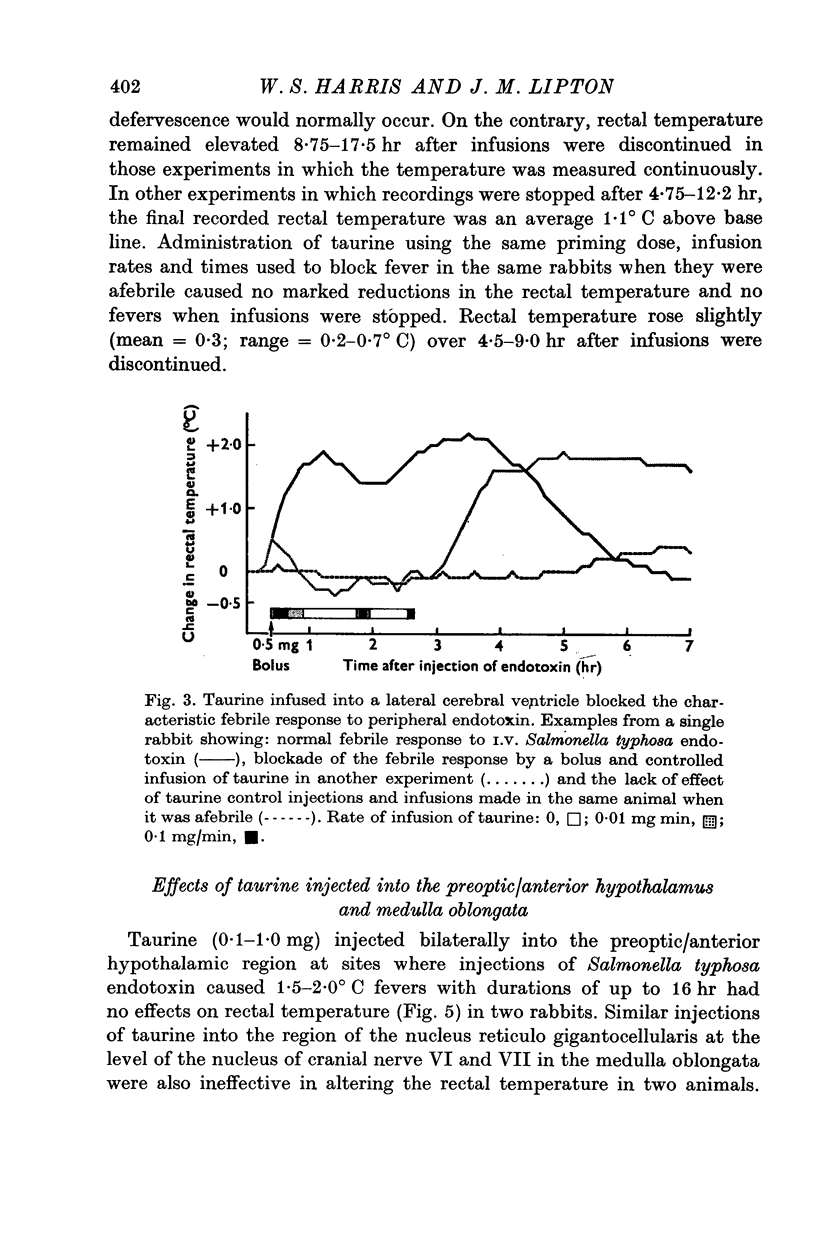
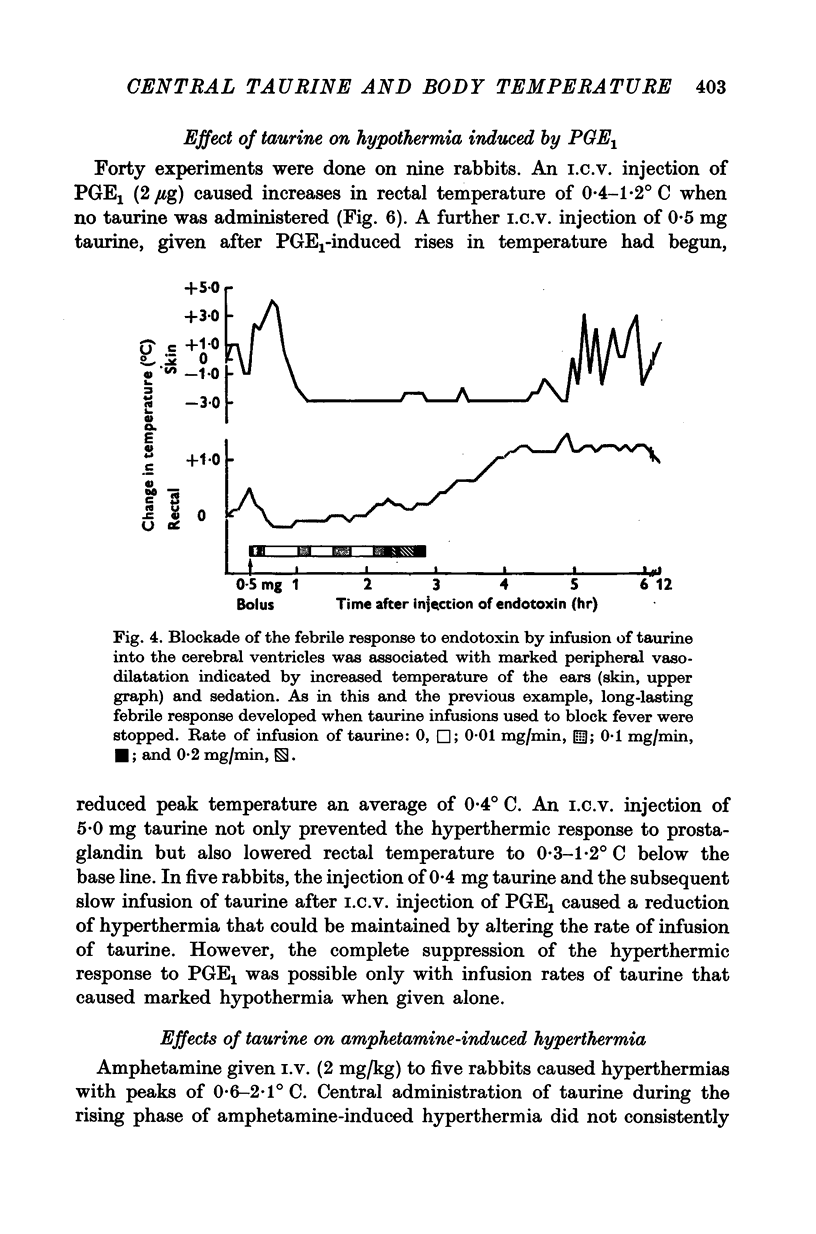
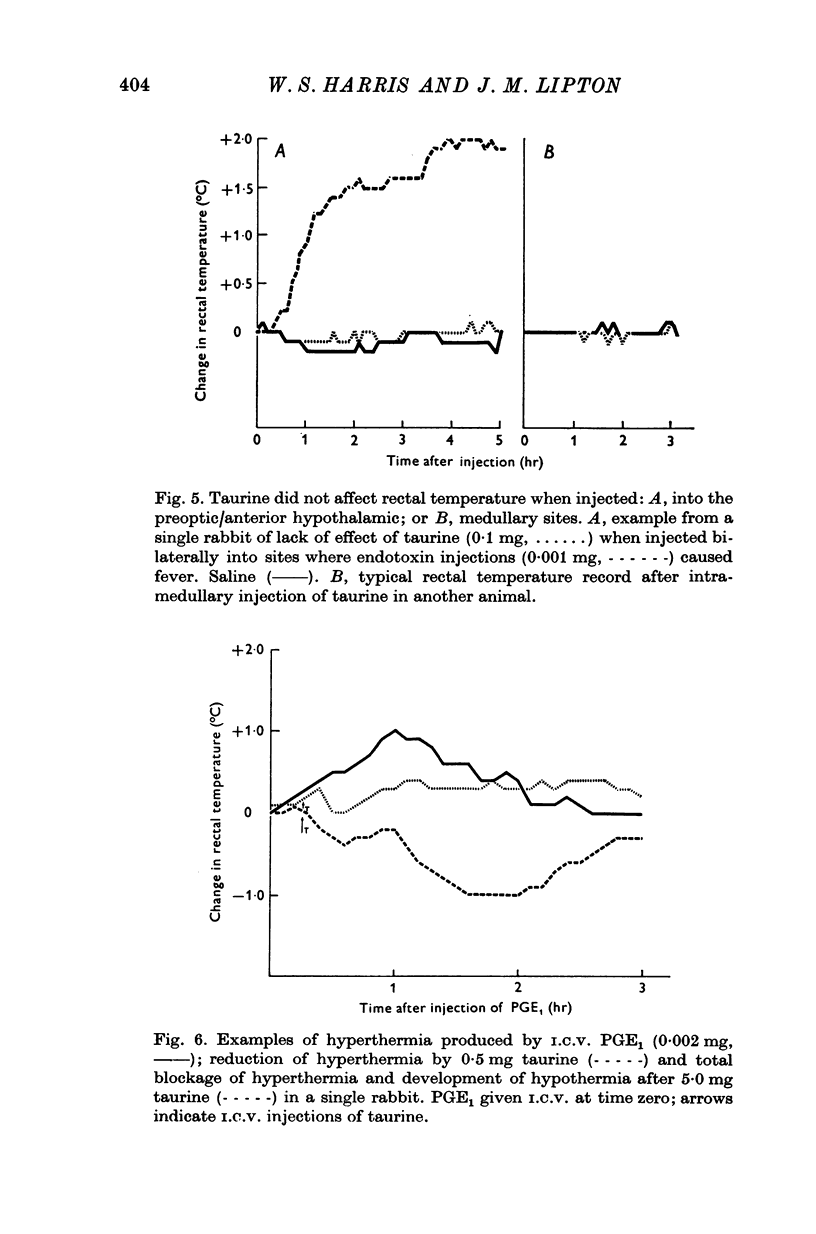
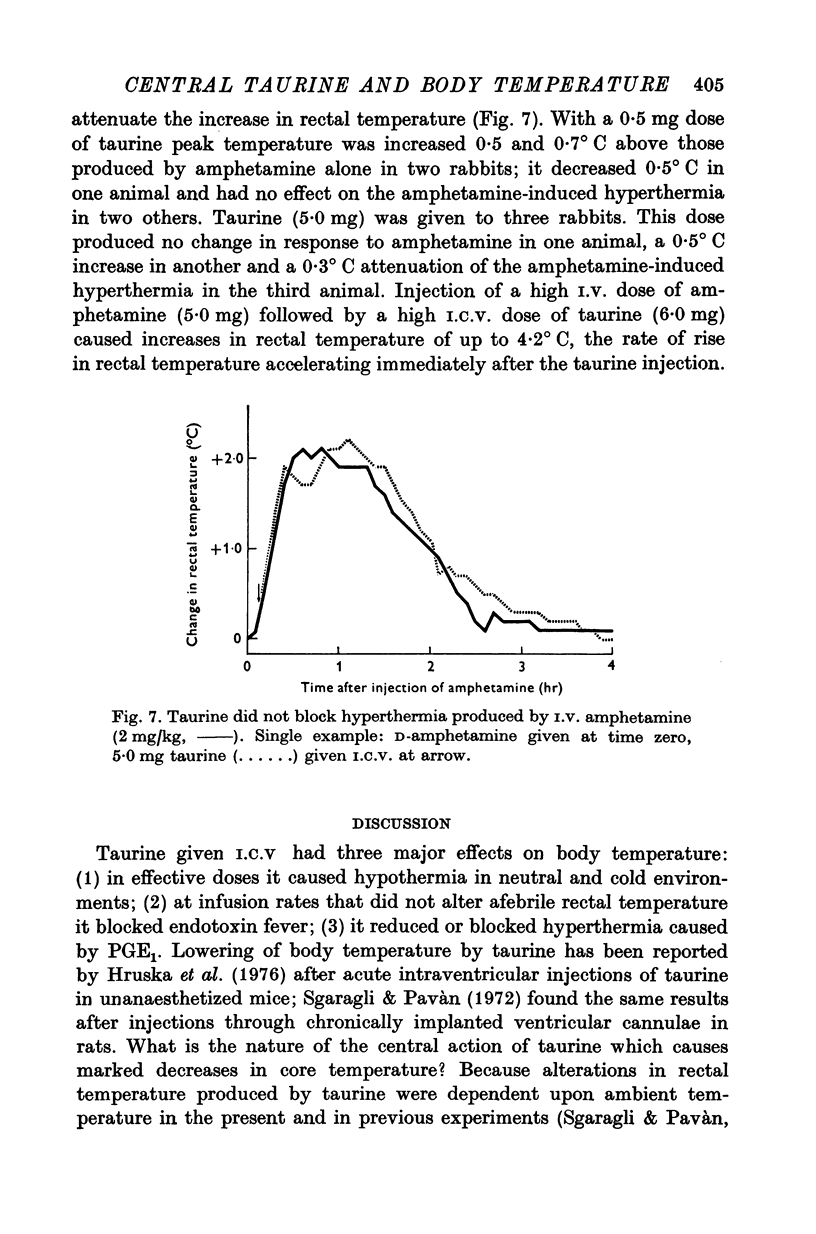
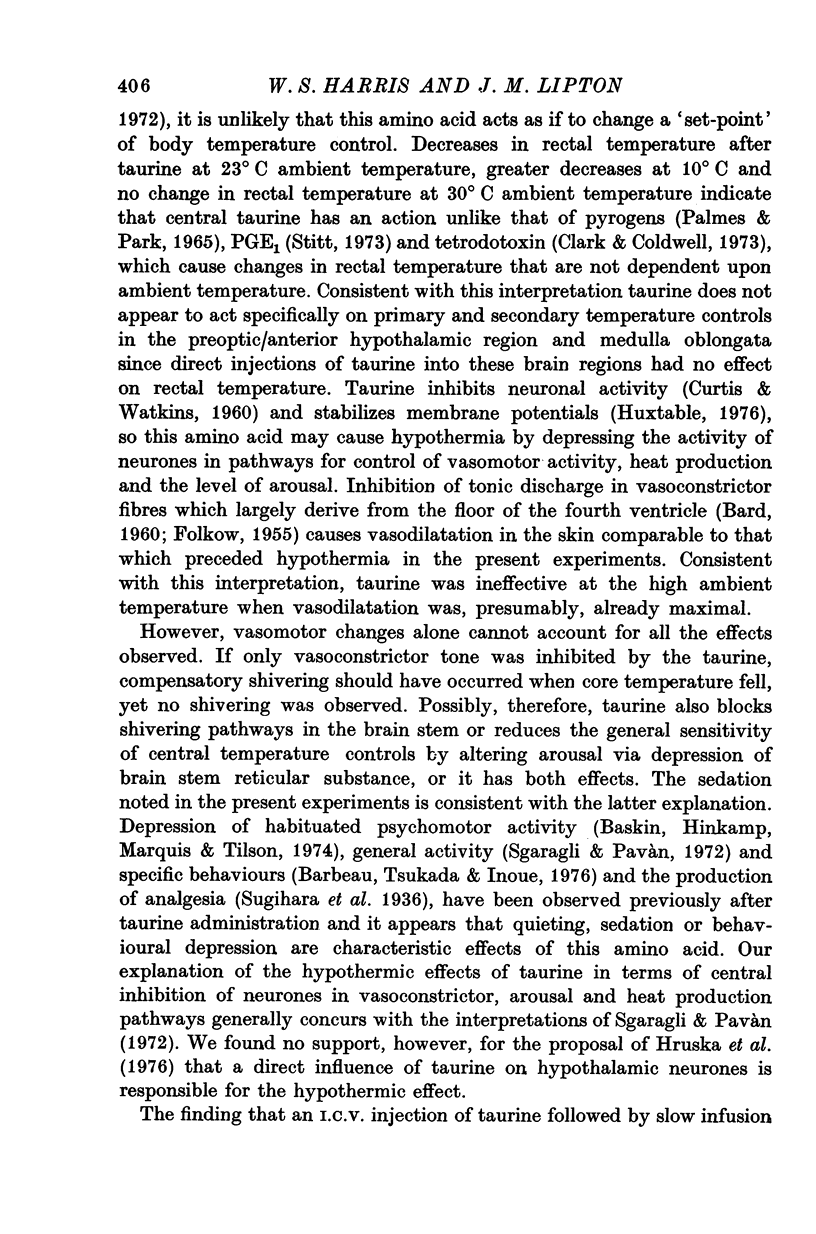
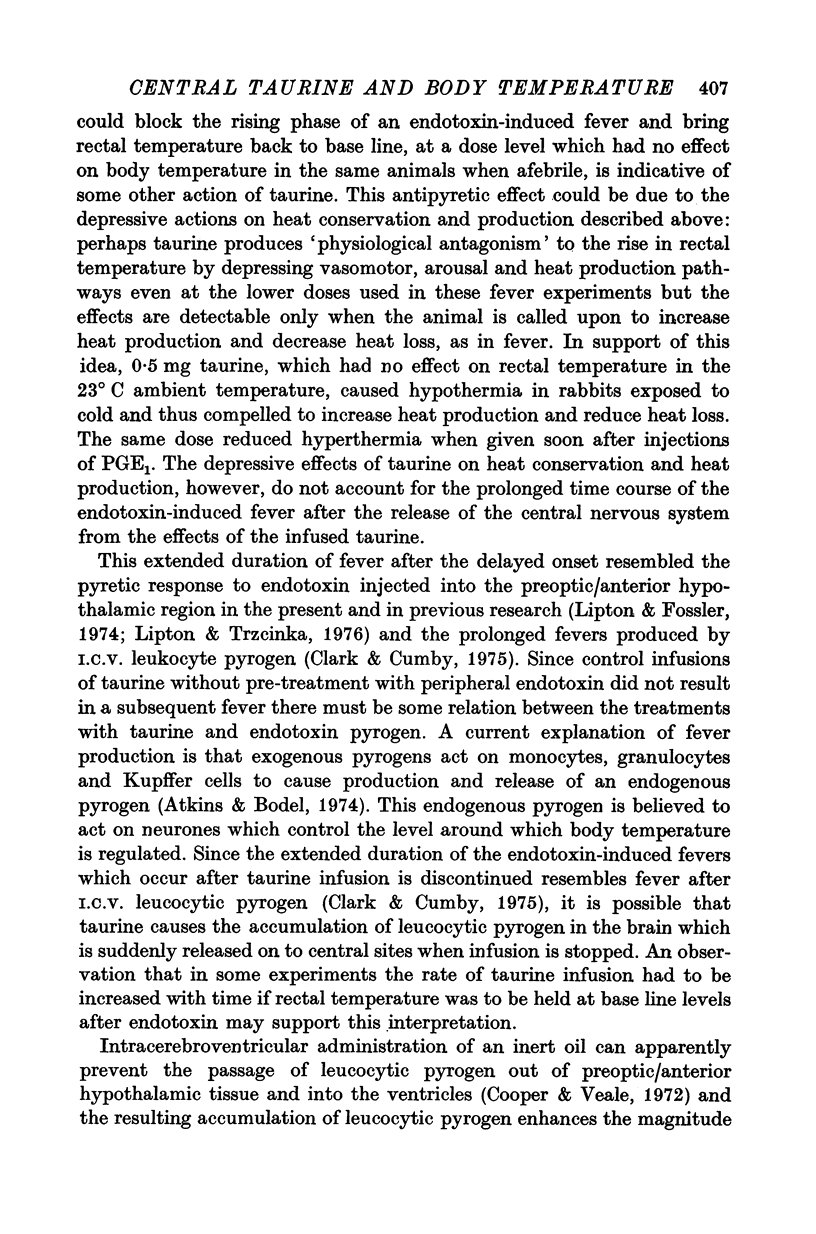
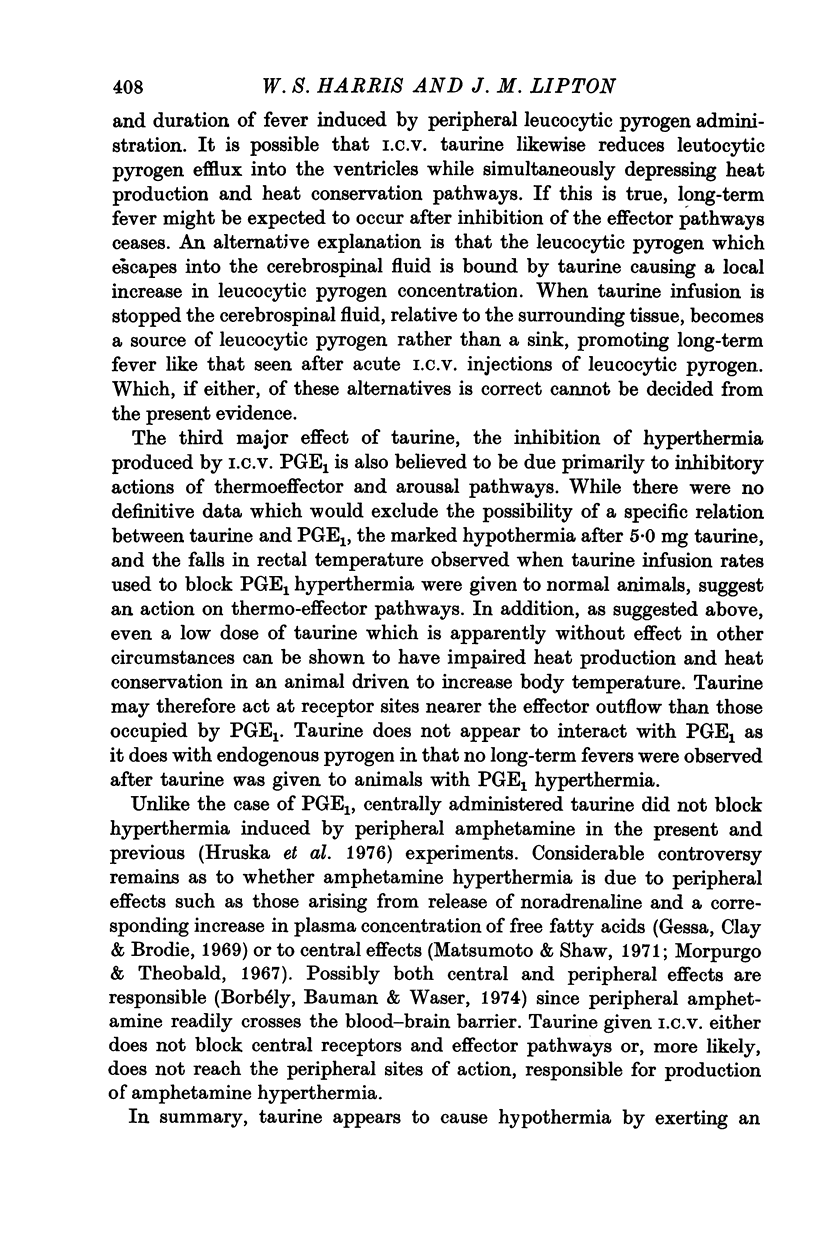
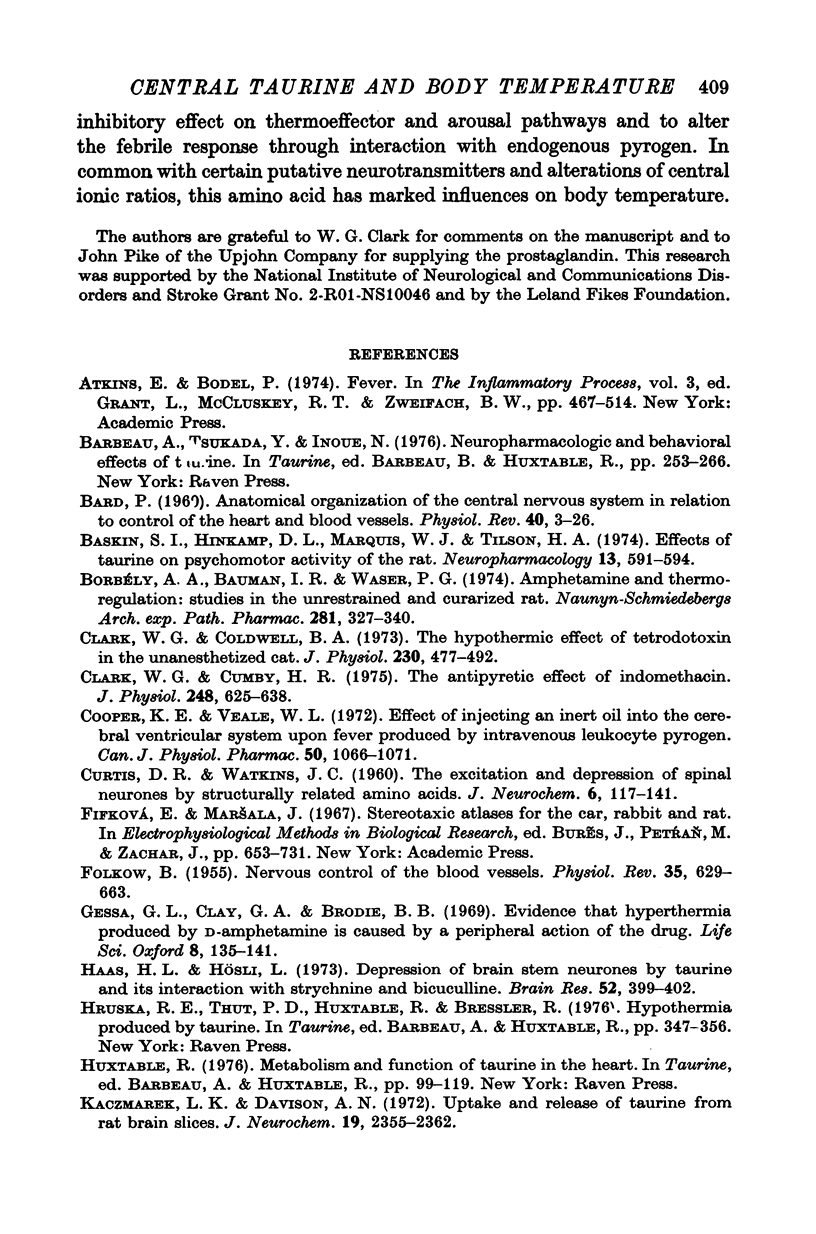
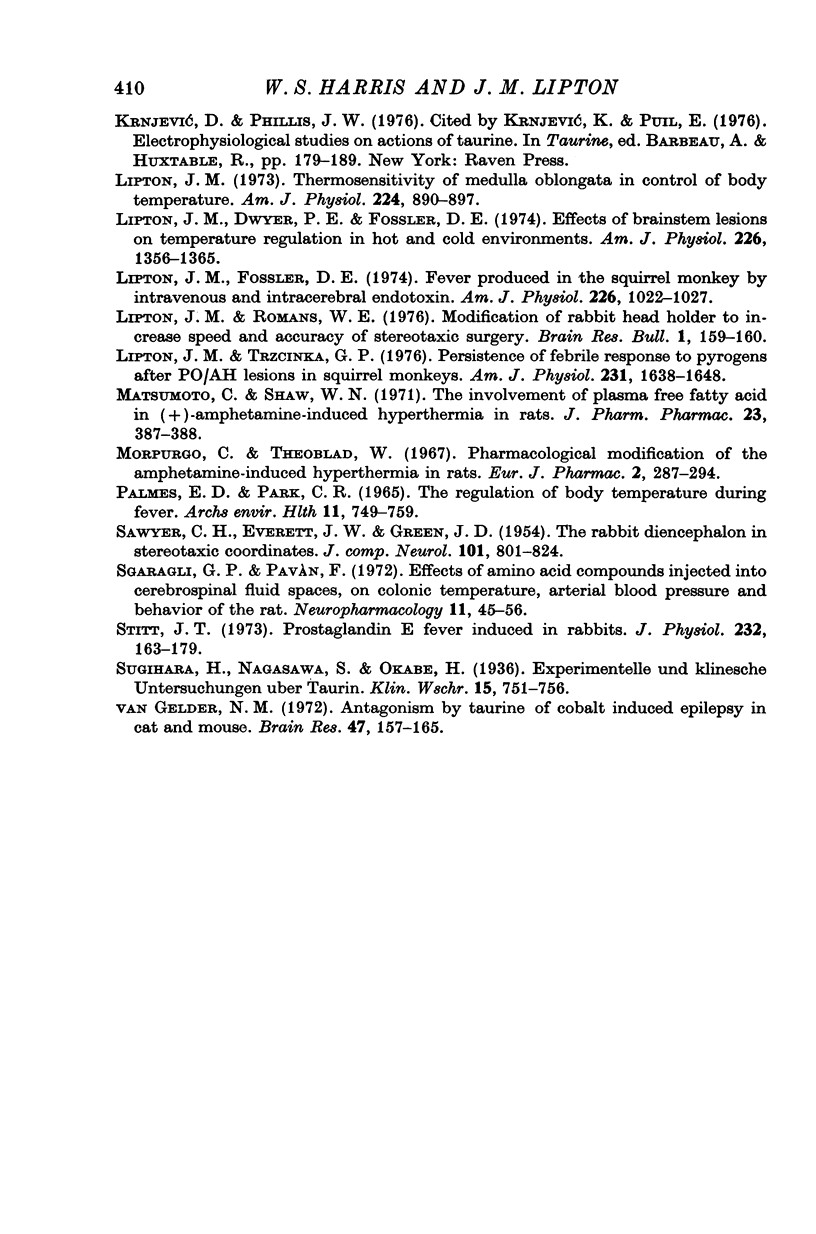
Selected References
These references are in PubMed. This may not be the complete list of references from this article.
- Baskin S. I., Hinkamp D. L., Marquis W. J., Tilson H. A. Effects of taurine on psychomotor activity in the rat. Neuropharmacology. 1974 Jul;13(7):591–594. doi: 10.1016/0028-3908(74)90047-1. [DOI] [PubMed] [Google Scholar]
- Borbély A. A., Baumann I. R., Waser P. G. Amphetamine and thermoregulation: studies in the unrestrained and curarized rat. Naunyn Schmiedebergs Arch Pharmacol. 1974;281(4):327–340. doi: 10.1007/BF00499429. [DOI] [PubMed] [Google Scholar]
- CURTIS D. R., WATKINS J. C. The excitation and depression of spinal neurones by structurally related amino acids. J Neurochem. 1960 Sep;6:117–141. doi: 10.1111/j.1471-4159.1960.tb13458.x. [DOI] [PubMed] [Google Scholar]
- Clark W. G., Coldwell B. A. The hypothermic effect of tetrodotoxin in the unanaesthetized cat. J Physiol. 1973 Apr;230(2):477–492. doi: 10.1113/jphysiol.1973.sp010199. [DOI] [PMC free article] [PubMed] [Google Scholar]
- Clark W. G., Cumby H. R. The antipyretic effect of indomethacin. J Physiol. 1975 Jul;248(3):625–638. doi: 10.1113/jphysiol.1975.sp010992. [DOI] [PMC free article] [PubMed] [Google Scholar]
- Cooper K. E., Veale W. L. The effect of injecting an inert oil into the cerebral ventricular system upon fever produced by intravenous leucocyte pyrogen. Can J Physiol Pharmacol. 1972 Nov;50(11):1066–1071. doi: 10.1139/y72-154. [DOI] [PubMed] [Google Scholar]
- Gessa G. L., Clay G. A., Brodie B. B. Evidence that hyperthermia produced by d-amphetamine is caused by a peripheral action of the drug. Life Sci. 1969 Feb 1;8(3):135–141. doi: 10.1016/0024-3205(69)90086-1. [DOI] [PubMed] [Google Scholar]
- Haas H. L., Hösli L. The depression of brain stem neurones by taurine and its interaction with strychnine and bicuculline. Brain Res. 1973 Mar 30;52:399–402. doi: 10.1016/0006-8993(73)90680-x. [DOI] [PubMed] [Google Scholar]
- Kaczmarek L. K., Davison A. N. Uptake and release of taurine from rat brain slices. J Neurochem. 1972 Oct;19(10):2355–2362. doi: 10.1111/j.1471-4159.1972.tb01289.x. [DOI] [PubMed] [Google Scholar]
- Lipton J. M., Dwyer P. E., Fossler D. E. Effects of brainstem lesions on temperature regulation in hot and cold environments. Am J Physiol. 1974 Jun;226(6):1356–1365. doi: 10.1152/ajplegacy.1974.226.6.1356. [DOI] [PubMed] [Google Scholar]
- Lipton J. M., Fossler D. E. Fever produced in the squirrel monkey by intravenous and intracerebral endotoxin. Am J Physiol. 1974 May;226(5):1022–1027. doi: 10.1152/ajplegacy.1974.226.5.1022. [DOI] [PubMed] [Google Scholar]
- Lipton J. M., Romans W. E. Modification of rabbit head holder to increase speed and accuracy of stereotaxic surgery. Brain Res Bull. 1976 Jan-Feb;1(1):159–160. doi: 10.1016/0361-9230(76)90059-9. [DOI] [PubMed] [Google Scholar]
- Lipton J. M. Thermosensitivity of medulla oblongata in control of body temperature. Am J Physiol. 1973 Apr;224(4):890–897. doi: 10.1152/ajplegacy.1973.224.4.890. [DOI] [PubMed] [Google Scholar]
- Lipton J. M., Trzcinka G. P. Persistence of febrile response to pyrogens after PO/AH lesions in squirrel monkeys. Am J Physiol. 1976 Dec;231(6):1638–1648. doi: 10.1152/ajplegacy.1976.231.6.1638. [DOI] [PubMed] [Google Scholar]
- Matsumoto C., Shaw W. N. The involvement of plasma free fatty acids in (+)-amphetamine-induced hyperthermia in rats. J Pharm Pharmacol. 1971 May;23(5):387–388. doi: 10.1111/j.2042-7158.1971.tb09937.x. [DOI] [PubMed] [Google Scholar]
- Morpurgo C., Theobald W. Pharmacological modifications on the amphetamine-induced hyperthermia in rats. Eur J Pharmacol. 1968 Feb;2(4):287–294. doi: 10.1016/0014-2999(68)90079-4. [DOI] [PubMed] [Google Scholar]
- Palmes E. D., Park C. R. The regulation of body temperature during fever. Arch Environ Health. 1965 Dec;11(6):749–759. doi: 10.1080/00039896.1965.10664295. [DOI] [PubMed] [Google Scholar]
- SAWYER C. H., EVERETT J. W., GREEN J. D. The rabbit diencephalon in stereotaxic coordinates. J Comp Neurol. 1954 Dec;101(3):801–824. doi: 10.1002/cne.901010307. [DOI] [PubMed] [Google Scholar]
- Sgaragli G., Pavan F. Effects of amino acid compounds injected into cerebrospinal fluid spaces, on colonic temperature, arterial blood pressure and behaviour of the rat. Neuropharmacology. 1972 Jan;11(1):45–56. doi: 10.1016/0028-3908(72)90056-1. [DOI] [PubMed] [Google Scholar]
- Stitt J. T. Prosaglandin E1 fever induced in rabbits. J Physiol. 1973 Jul;232(1):163–179. doi: 10.1113/jphysiol.1973.sp010262. [DOI] [PMC free article] [PubMed] [Google Scholar]
- Van Gelder N. M. Antagonism by taurine of cobalt induced epilepsy in cat and mouse. Brain Res. 1972 Nov 27;47(1):157–165. doi: 10.1016/0006-8993(72)90259-4. [DOI] [PubMed] [Google Scholar]


